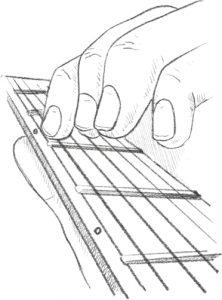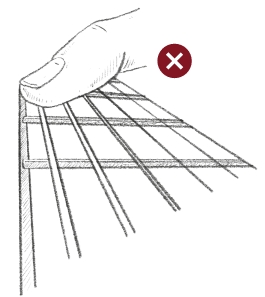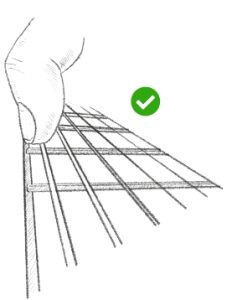
Dexterity
Before you dive into music theory exploring the vast world of intervals, modes, and all the things that are part of any guitarist study, let's take a step back and look at an overlooked important step that leads perfectly into the practical theory.
Getting comfortable on the fretboard with finger dexterity training is an important part of guitar study, if you can dedicate even five minutes before any other lessons or theory, you will increase your chances of sticking with the guitar.
The goal of the dexterity exercises is to address the following:
- Get your fingers comfortable on the fretboard.
- Get all the fingers involved early.
- Develop finger strength and poise.
- Slowly introduce Theory in a more natural way.
- Develop finger positioning without the anxiety.
Dexterity training does not replace the instructor. Suppose you decide to learn on your own from books, online videos, or maybe you find a local in-person instructor. In any case, this guide is a side component and not a replacement for theory instruction. However, we do touch on music theory and talk about it in general terms; the way we approach it is mild.
If you choose to work through this book first before obtaining instruction, it will help get your fingers comfortable pressing the strings. You can concentrate on the theory itself and less on pressing strings because your fingers will already have the dexterity you most defiantly need.
Dexterity is an essential step in learning guitar.
Without proper control of your fingers, learning the scales and chords can seem complicated. Like all things, the guitar is a step-by-step process; dexterity is almost always overlooked or lightly addressed in the beginning steps of learning the guitar. If you spend time getting your fingers accustom to pressing the string with each finger and with the proper pressure and placement, the chords and scales will fall inline because you will have trained your fingers to work independently of the theory.
Finger poise and pressure:

Fingers resting unintentionally across other strings will create unwanted buzz; it is essential to overcome early in your learning.

Starting the right way, take time early in your practice to make sure your fingers are pressing directly down and not resting on other strings.
Along with finger poise is finger pressure; notice just how much force it takes to get a crisp, clean sound, too much pressure will strain your fingers and work against you while pressing to light will make for improper sound. Your fingers should be pressing as light as possible while maintaining an even steady pressure when playing; if the sound is not clear intermittently, think about your finger pressure and make an adjustment and move on. If you find your hands are getting uncomfortable, stop, observe your finger pressure, adjust and move on.

